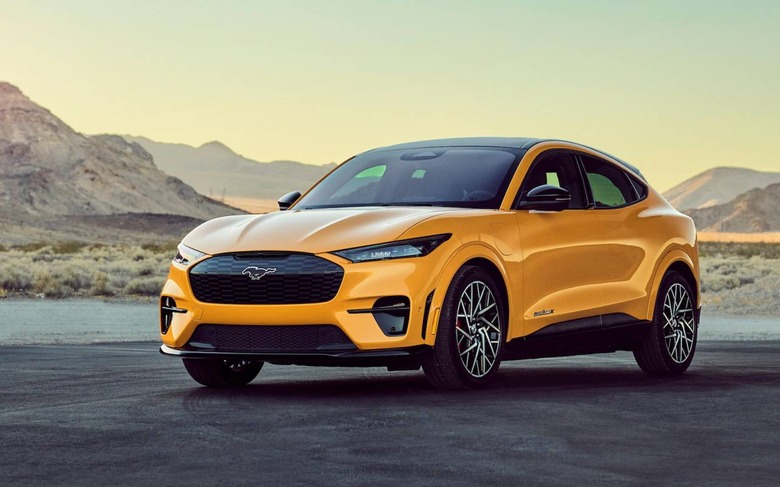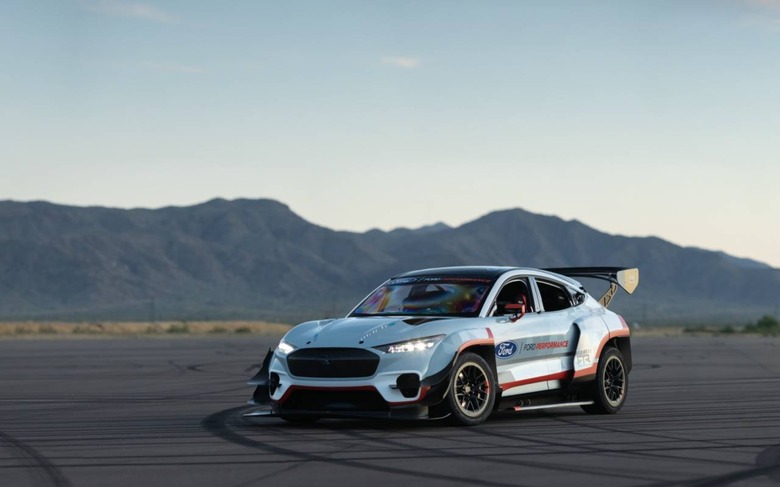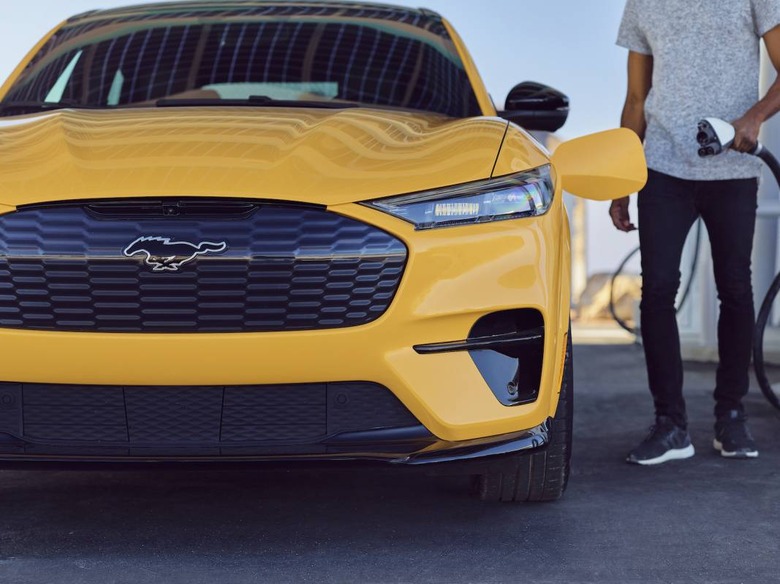It's Only A Matter Of Time Before The Mach-E Is Ford's Fastest Mustang
Ford has a new, faster Mustang Mach-E in the pipeline, and if your lodestar is the quickest vehicle with a pony badge then the electric crossover may end up being your port of call. The Mustang Mach-E GT Performance Edition doesn't quite slot in as the big daddy of the Mustang range, but it's definitely putting its coupe and convertible brethren on notice.
The Performance Edition does pretty much exactly what the name suggests. Ford will start with the regular Mustang Mach-E GT, and then dial in more torque from the electric all-wheel drive (e-AWD) system. The result is 634 lb-ft, up from 600 lb-ft in the standard GT.
Horsepower stays the same, at 480 hp, but it's still enough to cut the 0-60 mph time from 3.8 seconds – per Ford's estimates for the upcoming production GT – to 3.5 seconds.

Those are impressive numbers for a crossover, and indeed impressive numbers for anything Ford sells with a Mustang badge. The discontinued Mustang Shelby GT350, for example, did 0-60 in 3.9 seconds. Ford's current flagship of the range, the Shelby GT500, does it in 3.3 seconds.
It doesn't seem too far-fetched to imagine future Mustang Mach-E models nudging past that level of performance, then. After all, if you compare "GT" to "GT" then the Mustang GT's 5.0-liter V8 falls short on both torque and horsepower compared to its Mustang Mach-E GT cousin. That's before we've seen the Mustang Shelby Mach-E you have to assume Ford Performance have been working on.
The writing has arguably been on the wall for internal-combustion sports cars for some time now, of course. Though potent gas engines are still the mainstay of performance cars, the instantaneous torque of EVs has clear advantages. If there's been a downside it's the shortcomings of battery technology when faced with demanding electric motors: the Mustang Mach-E GT Performance Edition, for example, trims the estimated range from 250 miles in the regular GT crossover EV, to 235 miles.

Indeed it's battery chemistry, rather than electric potential, that seems to be the bottleneck. The Mustang Mach-E 1400 – with seven electric motors and a ridiculous 1,400 horsepower – is evidence of just what can be done when excess is the goal, and just how rapidly you can drain batteries in the process. Ford Performance's answer was to make it faster to charge rather than try to pack in more capacity, though the special track-side charger isn't really a feasible option for regular EVs. The Mustang Mach-E GT Performance Edition tops out at the same 150 kW DC fast charging as the standard GT does.
Ford never intended to put the Mach-E 1400 into production. What it does see as the electric behemoth's role – beyond acting as a halo car for EVs in general – is to experiment with different configurations of motor in the pursuit of performance. "Mustang Mach-E 1400 is a showcase of the art of the possible with an electric vehicle," Mark Rushbrook, motorsports director at Ford Performance, said back in July when the supercar-crushing crossover was shown off officially for the first time.
Right now, the Mustang Mach-E GT Performance Edition takes a fairly straightforward approach to its bump in potency. No extra motors beyond the two in the GT already – certainly a far cry from the Mach-E 1400's three motors at the front and four at the rear – and a clear attempt to balance a push for speed with not sacrificing too much range. Other automakers have plans for three and even four motor EVs, however, and it's not hard to imagine Ford doing something similar.

Ford will offer the Performance Edition as an optional upgrade for Mustang Mach-E GT reservation-holders when the order books open in spring 2021. It's unclear just how many people it expects to add the option and take the range hit, and Ford hasn't said how it'll impact the regular GT's $60,500 starting price (before incentives). Still, with speed the big appeal for many GT buyers, it's hard to imagine too many of them saying no.
